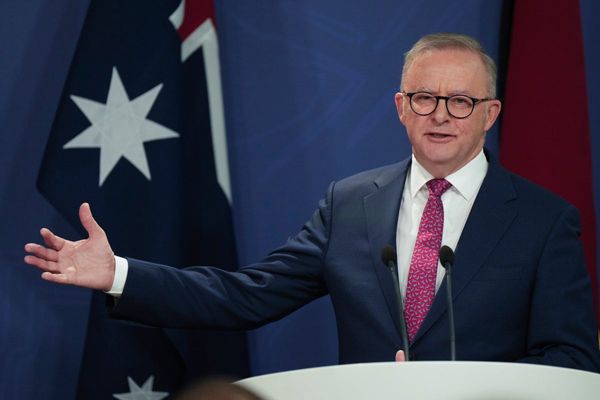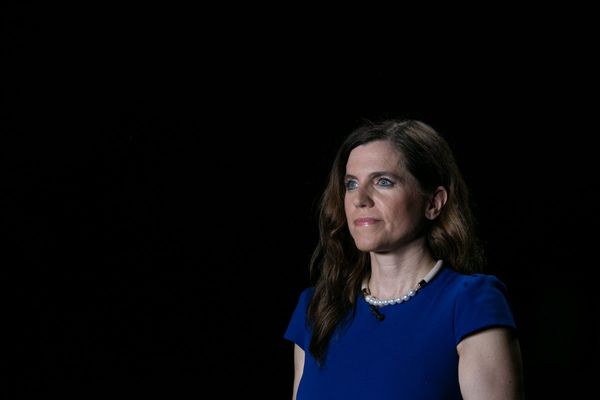
There’s nothing Australia’s political reporters enjoy more than a good wedging: that delicious moment when they can manoeuvre one of the big political players into a cleverly constructed “damned if you do, damned if you don’t” moment.
But after nearly five years of media salivating over seeing Albanese trapped by the oh-so-clever Morrison tax cut wedge, it’s the traditional media that finds itself caught in the vice between what they’re convinced themselves is “news” and what, it turns out, Australians want to know.
The social and fiscal time bomb that was the Morrison stage three tax cuts has long been hiding in plain sight. The media has long been busy priming themselves for a political explosion, with its cunning rule-in/rule-out questions. They expected New Year’s Eve-level fireworks. They got a damp squib.
The traditional media approach to politics is broken — and in this country, it’s broken in a peculiarly Australian way.
The “liar, liar, pants on fire” reporting construct is an eccentrically Australian conceit. In the age of social-media-powered disinformation that’s roiling journalism worldwide, the delicate parsing by Australia’s elite media would appear almost quaint, if it weren’t so destructive — of journalism, more than anything else.
The practice is not, as the media likes to tell itself, a dose of much-needed journalistic accountability. Rather, it’s a journalistic choice of a political narrative that spotlights the clowning in the main ring of the circus. It comes with a self-importance — a hubris — of the journalists as ring-masters, directing the political performers around the public stage with a reverberating “Is your word your bond?” demand.
With its fumbling of its reporting on the government’s tax pivot, that hubris has, inevitably, turned to nemesis. Turns out voters like a government that adapts and adjusts. No surprise: we’ve got nearly 50 years of evidence that voters judge campaigning commitments with more nuance than the gallery likes to think — since Howard earned his “Honest John” moniker in 1977 when his pre-election fistful of dollars promise went unredeemed in the post-election budget.
While the politics of governance — all that guff about the players and the games they play — adds colour (and clickbait) to modern journalism, it’s a poor substitute for the substance of policy and decision-making.
Too much of the modern press corps lacks the lived experience to write about politics knowledgeably, having never been through the hard doing of trying to make things happen through organising and campaigning. Worse, there’s a rarely-hidden contempt for the people who have — and this includes many of their most engaged readers and viewers. In Bowling Alone, US writer Robert Putnam called the reward of community engagement “social capital” which, he found, correlated with heavy news habits — the sort of people that subscription-based news media need.
This lack of experience shows in changing work careers. Once, the revolving door between ministerial offices and the gallery turned both ways. Some of the best of an earlier generation of political journalists went over to what the craft calls “the dark side” before returning to reporting with a far deeper understanding of how government actually works.
One of the things that they would learn on the inside is that even with all the work on game theory or behavioural economics, no-one really knows what shifts votes and public opinion on any particular issue, or from election to election, other than a tentative pattern recognition and a shrugging “what happened last time” recency bias.
In Australia, the press corps, too, regularly miss the shaping of the “all-politics” news choices by News Corp driving its political narrative of choice. Through its selective reporting of its own Newspoll across 2022 and 2023, for example, the US company successfully created a journalistic consensus about a government — and a prime minister — in trouble.
Right now, it’s trying to hammer the “broken promise” meme into that discourse, from the Telegraph’s front page “Albo’s word sold for $28b” when the pivot was first announced to “Cost of PM’s duplicity yet to be fully measured” in this past weekend’s Australian.
Based on what we know of news consumption, here and overseas, engaged readers aren’t having it. In the US, publishers are winding back their investment in the political circus, with big mastheads like the Los Angeles Times and The Wall Street Journal just the latest to slash their Washington bureaus.
Without a pivot to the substance of the news that readers need, don’t be surprised if 2024 brings a similar thinning of political bureaus in Canberra.
Has the media misread the national mood when it comes to the stage three tax cuts? Let us know your thoughts by writing to letters@crikey.com.au. Please include your full name to be considered for publication. We reserve the right to edit for length and clarity.







